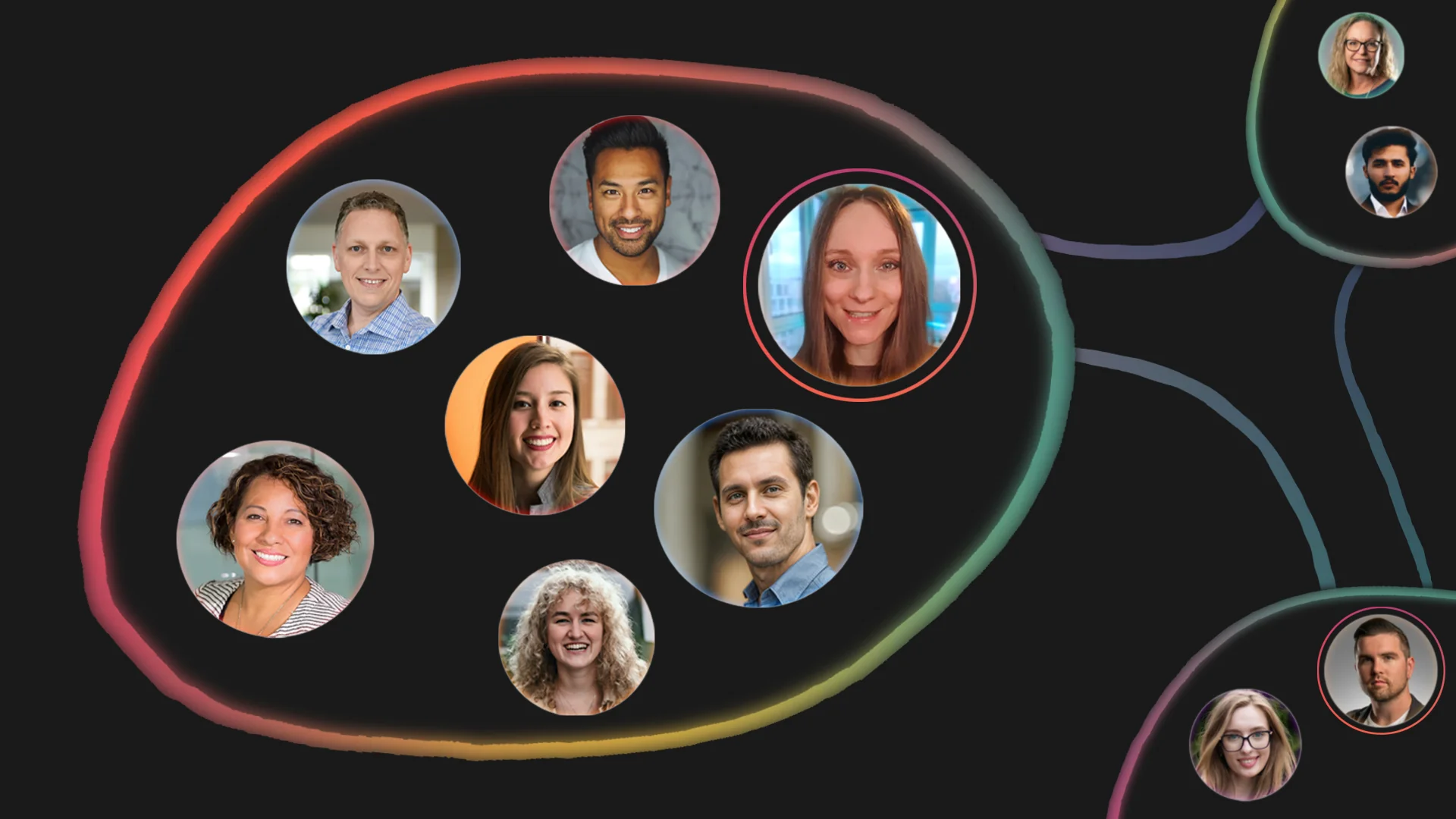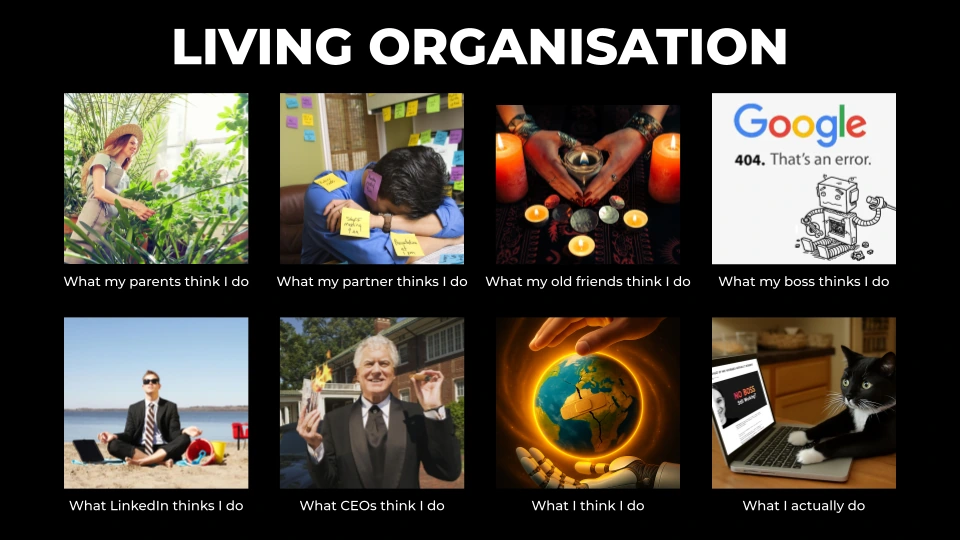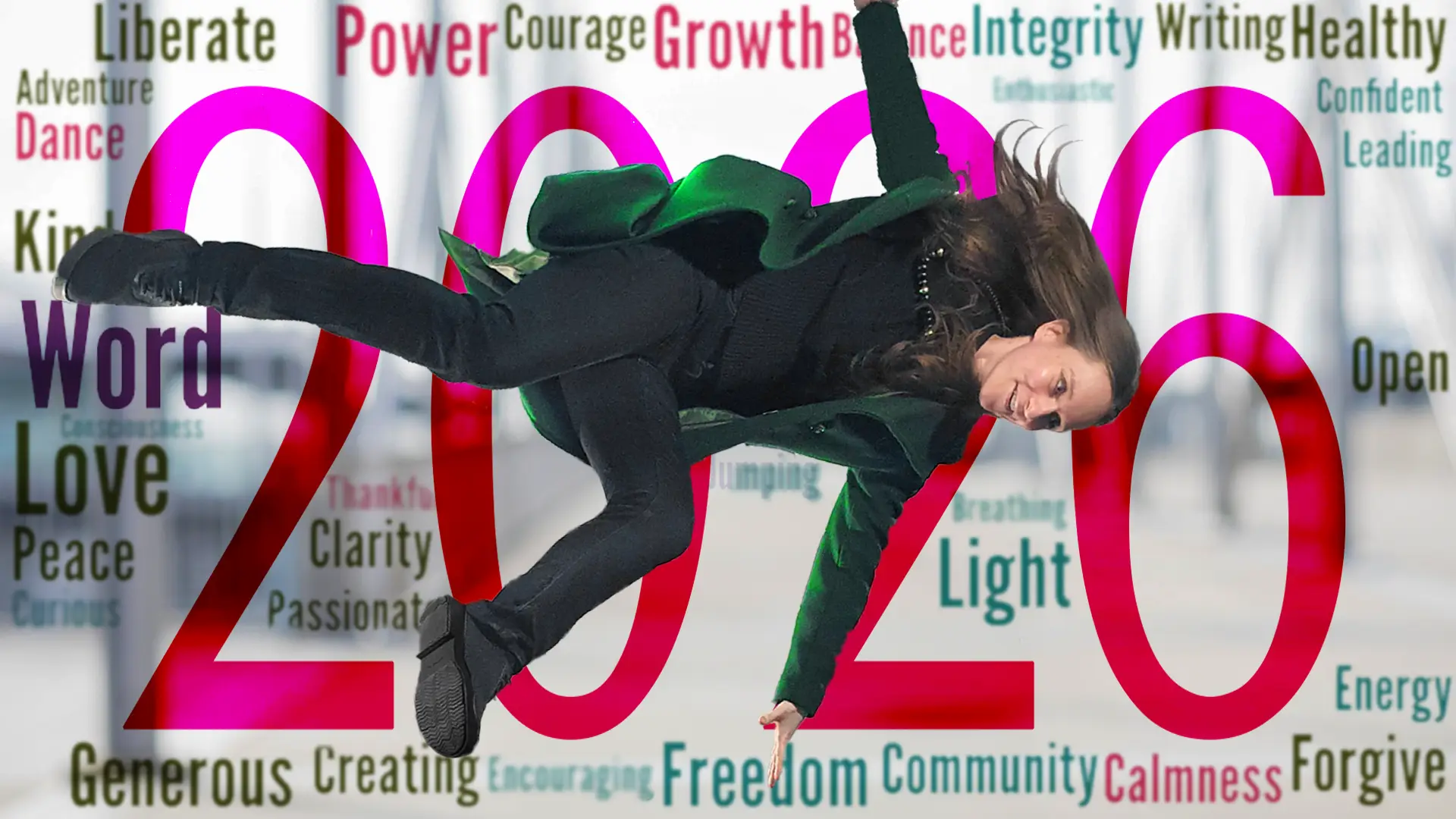Quick Summary: Curious about Living Organisations? Let’s explore what this organizational framework is, why it matters, and how it supports people and teams thrive – no matter your current company size or role.
If you’re curious about what a Living Organisation is, you’re in the right place. Whether you’re skeptical, already hooked or simply curious – dive in!
If you’re working with me and received this link – hey, good to see you here 👋 Get a sense for what living, transforming, evolving workplaces are really about.
For years, I’ve seen some individuals and their teams lose their energy and creativity because the culture and/or structure around them just wouldn’t support them fully.
I’ve watched highly successful, ambitious people leave their organization – simply because they couldn’t engage at the level they wanted. Let’s put a stop to that.
Whether you’re building a start-up, working within your small business, or navigating the waters at the corporate level – this is my invitation to you: Let’s get familiar with how Living Organisations work, why they matter, and what they unlock for people and teams.
In tune with the theme, this article will grow over time!
What is a Living Organisation?
A Living Organisation is designed like a living ecosystem. It embraces decentralized leadership, dynamic roles, and continuous adaptation, so people can collaborate, innovate, and contribute with real purpose. It empowers autonomous teams and individuals to co-create, experiment, and develop resilience and collective intelligence.
Why is it Important?
Organizational structures that cling to hierarchies, fixed roles, and top-down control can’t keep up with today’s complexity and opportunities such as rapid technological breakthroughs and global interconnectedness.
A Living Organisation matters because it unlocks the collective intelligence and creativity of everyone involved to deal with this complexity – it empowers people to lead, collaborate, and adapt in real time. This approach fosters genuine engagement, trust, and shared purpose, enabling teams to respond faster to change, learn from mistakes, and innovate in ways that static structures simply can’t.
Ultimately, a Living Organisation builds resilience, fuels meaningful growth, and creates workplaces where people actually want to be.
What are the Roots of Living Organisations?
The theoretical background of the Living Organisation is rooted (pun intended) in an integral and systemic perspective. Like my Integral Improvisational Coaching Approach, it’s drawing from the Four-Quadrant Model by Ken Wilber. It emphasizes the interplay between individual and collective, as well as interior and exterior perspectives.
The approach is shaped by the holon theory, viewing organizations as whole systems comprised of self-similar, fractal structures at every level. I’m happy to explain this in more detail soon because I find it one of the most fascinating parts of the organizational design. In short:
Imagine a human cell – it acts on its own, communicates with neighboring cells, all while contributing its unique work to the larger structures of tissue, organ, and body.
Core influences also include Peter Senge’s concept of the learning organization, highlighting disciplines like personal mastery, shared vision, mental models, team learning, and systems thinking as foundational components.
The framework recognizes that organizations evolve through multiple developmental stages that build upon one another – you might have heard this idea described as “Spiral Dynamics”.
For me, the most relevant aspect is this:
The Living Organisation addresses structure, culture, people, and value creation at the same time.
Ultimately, it’s rooting for sustainable transformation, positioning the human being – with all their needs, values, and potential – at the center of organizational development.
Who Developed the Framework?
The framework was developed by executive coach Guido Fiolka, founder of Coaching Center Berlin. He recently published the concept in the German book “Die lebendige Organisation: Das Living Organisation Playbook”.
I met Guido over ten years ago, and that’s when I first learned about the seeds of this framework. I’ll share more about that experience further down.
Living Organisation vs. Living Organization?
You might have noticed I write about the “organization” but use the term Living "Organisation”. That’s simply because the framework is written with an “s.”
In German, it’s called “Lebendige Organisation". However, I use the term “Living Organisation” in every context.
Living Organisation: More Insights
Next up, I want to shine a light on a few articles from my blog – each one explores a different facet of Living Organisations. I’ll give a quick glimpse into each, so you can find the starting point that speaks to you.

What if We Worked Without Bosses?
What’s it about? This might be my most provocative article so far. I take the question literally: What if we stopped having bosses? What if teams decided how they wanted to share leadership functions? What if teams self-organized with clear roles, shared decision-making, and a strong sense of purpose?
Why reading? Get a realistic overview of what would need to change in order to make a Living Organisation reality – if you want to transform into a 100% Living Organisation.
Read here: What if We Worked Without Bosses?

What if You Worked Without a Boss?
What’s it about? In this article, we zoom in on a fictional workday – you as a character navigating a Living Organisation. On a regular day, you make decisions close to your work, engage in meetings that energize you, and exchange feedback directly with peers.
Why reading? Get a sense of how it might feel to work in a Living Organisation. Along the way, you’ll learn more about the key concepts of the framework.
Read here: What if You Worked Without a Boss?

Are We Ready for Complexity or Just Speaking the Lingo?
What’s it about? This is often where it starts – with buzzwords. We all hear phrases like VUCA, disruptive environments, rapid adaptation, digital transformation. But what do these really mean in practice? I share three examples from my work as a coach and invite you to think for yourself.
Why reading? This article offers four concrete questions to evaluate the current state of your organization, and ends with the big one: Is our organization truly equipped to handle complexity?
Read here: Are We Ready for Complexity or Just Speaking the Lingo?

Cheering for Change – I Still Feel It in My Chest
Wha’s it about? In this short article, I reflect on the hesitation to engage with new organizational designs like Living Organisation, and why it shouldn’t take courage to support the idea that people can lead themselves.
Why reading? Read this if you feel relatively alone with your views on organizational development – it might help make the current dynamics clearer, and remind you why it needs people like you.
Read here: Cheering for Change – I Still Feel It in My Chest

Psychologist and Coach Answers the Questions for 100 Ceos
Wha’s it about? For this series, I got inspired by Steven Bartlett’s project, where 100 CEOs answer one community question each month.
Why reading? I’m threading in key concepts from the Living Organisation approach.
Read here:
- Why Does a Business Fail to Transform?
- How do you create a culture where employees ACTUALLY want to give it their all?
- What’s the biggest sign that a company’s culture isn’t what leadership thinks it is?
So Much More to Explore!
If you’d like to explore how a certain aspect could resonate with your organization – just let me know. Thanks for exploring with me!









